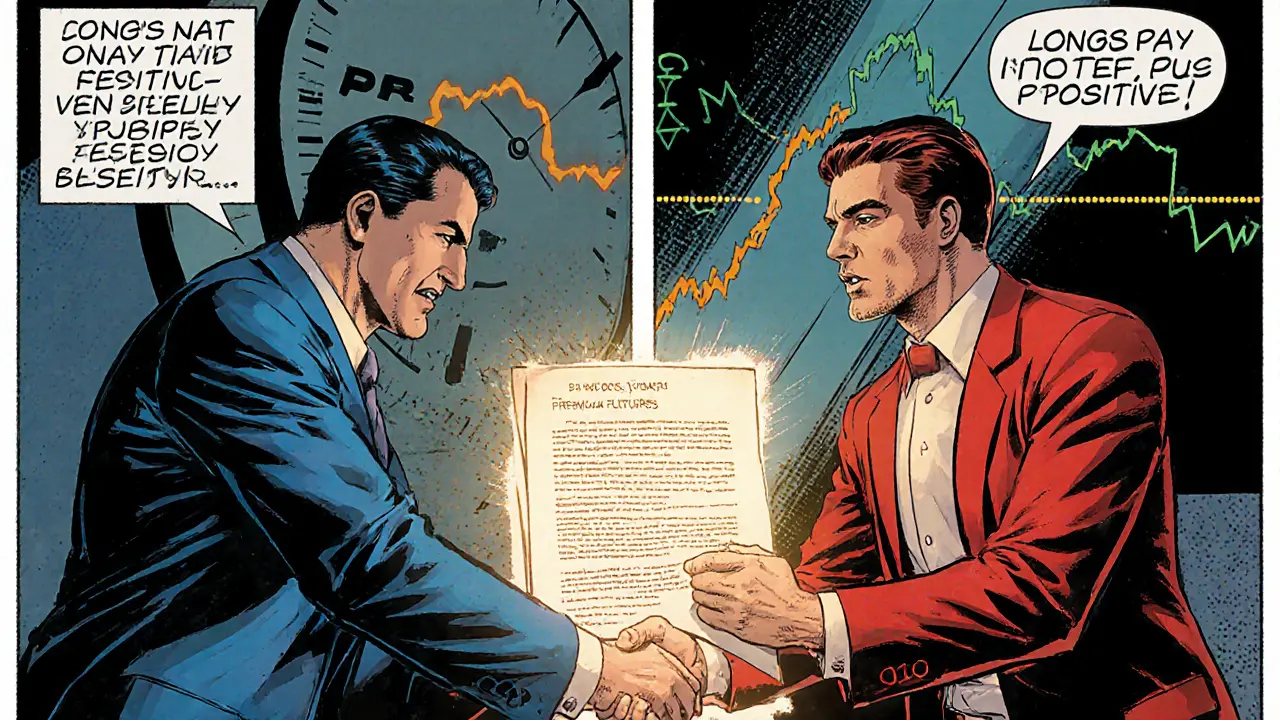Funding Rates Explained – How They Work & Why They Matter
When dealing with Funding Rates, periodic payments that keep perpetual futures prices aligned with spot markets. Also known as funding fees, they bridge the gap between futures contracts that never expire and the underlying asset’s price. You’ll often see funding rates on major Crypto Exchanges, platforms that host perpetual contracts and calculate the payments, and they directly affect Perpetual Futures, derivative contracts that mimic futures without an expiration date. Understanding these three entities is the first step to mastering the cost of holding positions over time.
Funding rates aren't random; they’re the result of a simple formula that combines two parts: an interest component and a premium component. The interest part reflects the cost of borrowing the underlying asset, while the premium measures how far the perpetual price deviates from the spot price. The rate is calculated every few hours (usually every 8 hours) and can be positive or negative. When the rate is positive, long‑position holders pay short‑position holders; a negative rate flips the flow. This dynamic makes Leverage, the multiplier that amplifies exposure on a trade a crucial factor, because the higher the leverage, the larger the funding cost or reward on a given position.
Why Funding Rates Matter for Traders
Every trader watching a perpetual market checks the funding rate because it directly impacts profitability. A high positive rate can turn a long‑biased market costly, prompting traders to short or hedge. Conversely, a deep negative rate can be a cash‑cow for longs, especially when the spot‑future spread is tight. These shifts also create Arbitrage, opportunities to capture price differences between contracts or exchanges. When funding rates diverge across platforms, savvy users move capital to the cheapest funding environment, a practice known as "funding arbitrage". This flow of capital helps smooth out price gaps, but it also spikes Market Volatility, the speed and magnitude of price swings as large positions adjust to changing costs.
Not all exchanges calculate funding the same way. Binance, Bybit, and Kraken, for example, each publish their own rates every eight hours, but the underlying formulas can differ in how they weigh the interest versus premium components. Some platforms cap extreme rates to protect traders from runaway costs, while others let rates swing wildly during market stress. This variance means the same perpetual contract can have a 0.015% funding charge on one exchange and a -0.020% rebate on another at the same moment. Knowing where the most favorable rates sit is a daily habit for professional traders and a useful tip for anyone dabbling in crypto derivatives.
Strategically, funding rates can be used to earn passive income. If you hold a stablecoin on a platform offering a negative funding rate, you effectively receive a small payment just for keeping your position open. Some traders even build systematic strategies that open a position when the funding rate crosses a predefined threshold, then close it once the rate normalizes. The key is to factor in the cost of borrowing, the risk of liquidations under high leverage, and the potential impact of sudden market moves. Ignoring any of these can turn a seemingly lucrative funding rebate into a quick loss.
Risk management is non‑negotiable when funding rates are in play. High positive rates can erode margins faster than price movements, especially on highly leveraged positions. Traders should monitor the rate timeline, set alerts for sudden spikes, and keep a buffer of collateral to avoid forced liquidations. Additionally, diversifying across exchanges reduces exposure to a single platform’s rate spikes and helps smooth out overall funding income.
Fortunately, a slew of tools makes tracking funding rates painless. Most exchanges provide a public API endpoint that returns the latest rate, and third‑party dashboards aggregate data across platforms for quick comparison. Some charting services overlay funding rates on price charts, letting you spot correlation patterns at a glance. For DIY fans, building a simple script that pulls the rate, multiplies it by your position size, and logs the daily cost can turn a vague concept into a concrete number you can plan around.
Armed with these basics, you can now dive into the curated articles below. They explore everything from how specific exchanges calculate rates, to advanced arbitrage tactics, to real‑world case studies of funding‑driven profit and loss. Whether you’re a beginner trying to grasp the fundamentals or a seasoned trader fine‑tuning a strategy, the collection gives you practical insights you can apply right away.






